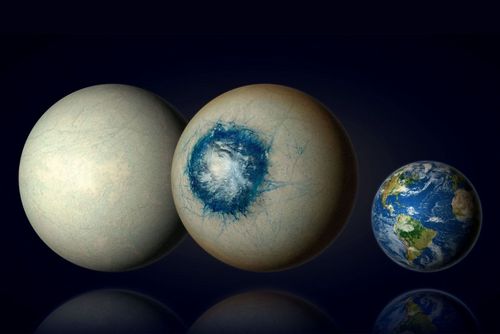The temperature of LHS 1140 is 3,096 K (2,823 °C; 5,113 °F), and it has a luminosity of 0.0038 times that of the Sun
For comparison, the Sun is 1 solar mass and radius, has a temperature of 5778 K with 1 solar luminosity
The orbit of LHS 1140 b takes 24.737 days to complete, much quicker than Earth’s year of 365 days. Its orbital radius is at 0.0946 AU, or 9.46% the distance between Earth and the Sun. While this is quite close, the star LHS 1140 is so dim that the planet only gets 0.43 times the incident flux of Earth at this distance.[2] Assuming an albedo of 0, LHS 1140 b has an equilibrium temperature of 230 K (−43 °C; −46 °F), compared to Earth’s at 255 K (−18 °C; −1 °F). If LHS 1140 b has an albedo similar to that of Earth, the equilibrium temperature would be even lower, at 201 K (−72 °C; −98 °F). However, with a greenhouse effect at least as strong as Earth’s LHS 1140 b would have a surface temperature greater than 266 K (−7 °C; 19 °F) for an albedo of 0. Due to the high mass of the planet, it likely has a thicker atmosphere with a more powerful greenhouse effect.
https://en.wikipedia.org/wiki/LHS_1140_b
It’s neat that it’s still potentially habitable with such different solar conditions.
Would be a lovely sci fi setting :)
Hoth?





